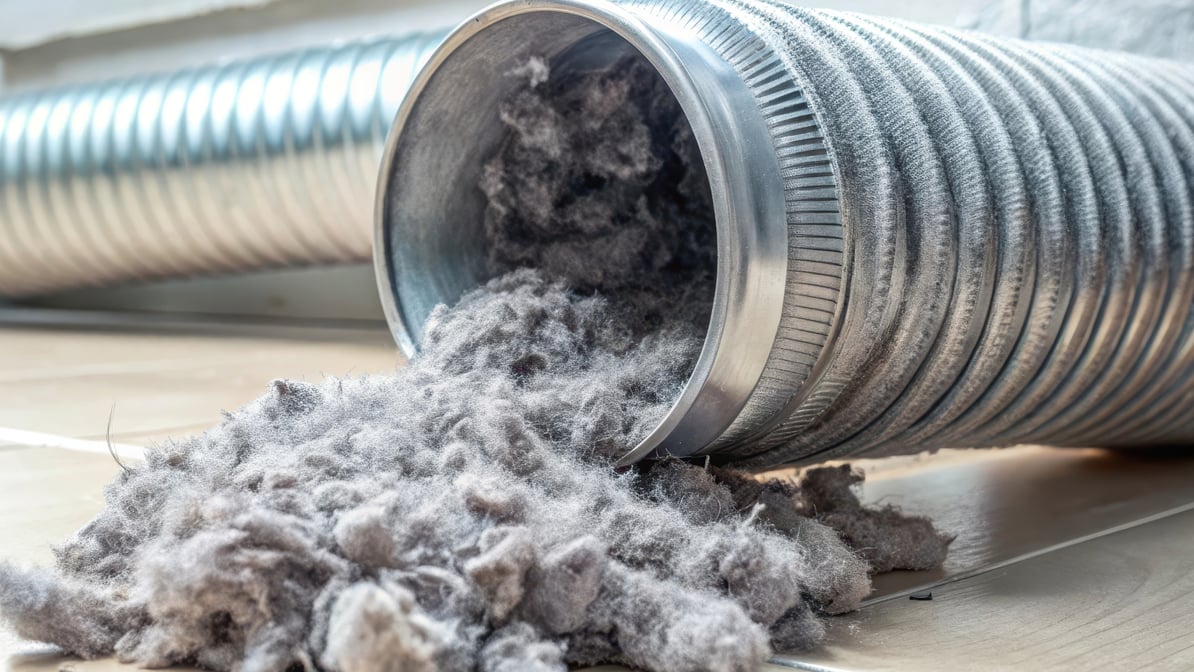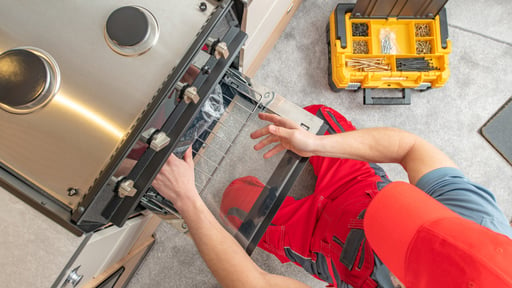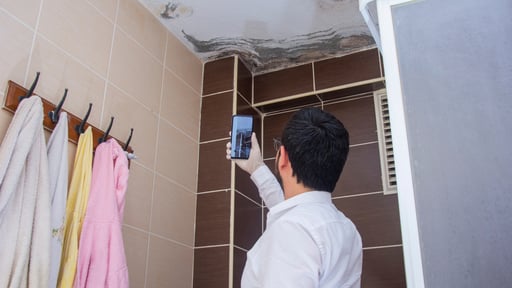Dryer Vent Basics: What Every Homeowner Should Know
The dirty truth about lint buildup and how to fix it

Despite regularly wiping out your lint traps, the heat from your dryer may ignite the highly flammable lint building up inside your dryer’s ventilation system. Thousands of house fires are caused by dirty dryer vents. Beyond fire risk, clogged vents reduce efficiency, increase drying time, and strain your appliance, leading to costly repairs or replacements.
How Dryer Ventilation Works:
The excess heat, moisture, and lint generated as your clothing dries travel from the back of your dryer through piping and ducts.
Depending on the design of your residence, a flexible (accordion-like) duct hose typically connects the back of the dryer to more rigid ductwork, capped off by a hooded vent (with a flap) attached to the exterior of your home.
Dryer duct systems should be less than 25 feet long with as few angles as possible. Excess bends and twists can create spaces for lint to accumulate or cause damage.
Signs Your Dryer Vent Needs Cleaning:
- Clothes take longer to dry
- The dryer feels hot to the touch
- A musty odor or burning smell during use
- Excess lint behind the dryer
Time, Tools, & Skill Level to Do It Yourself:
- An average professional cleaning takes about one hour to complete using lint brushes, snake vacuums, and even specialized cameras. If you’re taking on this project alone, allow plenty of time.
- Are you comfortable unhooking your dryer from any gas or electricity, moving it away from the wall, as well as reattaching the flexible tube hose securely, and plugging the dryer back in?
- Aluminum tape is preferable to reattach the duct. This is different than your handy roll of duct tape, which may deteriorate from the dryer’s heat.
- Access to a good vacuum cleaner with a long hose attachment is recommended.
- Consider purchasing a dryer vent brush kit ($10-$30) to effectively scrub the lint from the hose and sides of the vent.
- Handle your flexible metal duct hose very gently to avoid cracking, tearing, or poking holes in the material. (Better yet, have a replacement hose on hand.)
Resist the urge to grab your leaf blower! This method may pack the lint into any curves and corners within your duct system, creating even more fire danger.
For multi-level homes or long duct systems, a DIY approach may not reach deep blockages. That’s when professional help is worth considering.
Professional Dryer Vent Cleaning Costs:
Pricing typically ranges between $100 to $200, depending on vent length, accessibility, and whether your system has bends or vertical runs. Some providers may offer bundled services with HVAC or air duct cleaning for added savings.
ABODIO TIP: Clean your dryer vents at least once a year—more often if you run frequent loads or have furry pets that shed.
Clean vents mean safer homes, lower energy bills, and longer-lasting appliances. Don’t wait for a warning sign—make dryer vent maintenance part of your home care routine.
More News & Updates


